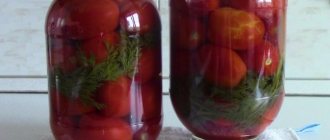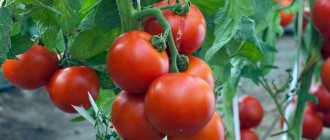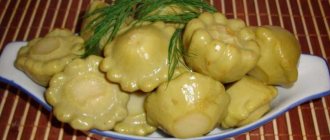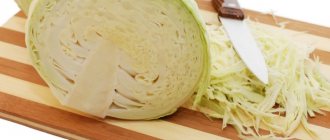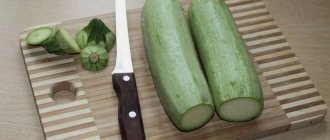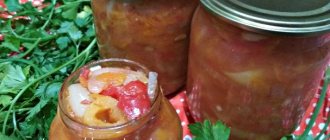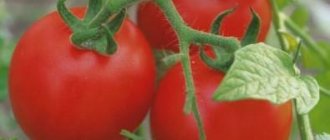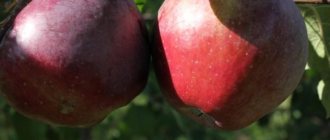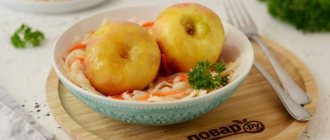Traditional Russian cuisine is famous for its variety of canned dishes. Which is not surprising, since long winters and short harvest periods have long forced people to come up with new ways to preserve food. Along with sauerkraut, pickling vegetables and pickling mushrooms, people in Rus' loved to soak apples. This was done in large oak barrels. Each layer of fresh fruit was covered with straw, then the whole thing was filled with a special brine and left under pressure for a certain time.
Of course, before, every family had a barrel and straw, but now, even if you manage to purchase a barrel, there is simply no place for it in a city apartment. However, this does not mean that it is impossible to prepare delicious soaked apples in modern home conditions. We know how to do it and we will tell you!
What is urination
Urine is a fairly ancient method of preservation. In this way, not only apples were preserved for future use, but also late berries: cloudberries, cranberries, lingonberries. The urination process is based on lactic acid fermentation. Fruits and berries contain large amounts of sugar, which is converted into lactic acid and preservatives during slow fermentation in brine. This is why apples are stored for such a long time. And due to the fact that canning occurs without preliminary heat treatment of the fruit, all the beneficial substances are not lost.
There are three types of apple soaking:
- Simple (salty) . With this method, the brine is prepared only with salt, and the fermentation process occurs due to the sugars contained in the fruit.
- Sweet . Everything is obvious here - in addition to salt, sugar or honey is added to the brine.
- Sour . The traditional method of soaking apples is when the brine is made with malt.
The last method was described almost step by step by Ivan Shmelev in his book “The Summer of the Lord”:
“On the eve of the Intercession, after dinner, the greatest joy, the third: they wet the Antonovka. <…> We wipe each apple with a canvas towel, look around to see if there is a wake, fill the birthmarks and curls with melted wax. There are tubs right there, fresh white, made of sticky. Oat straw, steamed, fragrant, is placed on the bottom of the tub, golden Antonovkas are placed on it so that the barrels do not touch, and again, in a row, straw, and again apples... - and is filled with warm water on malt.”
Then a pressure is placed on the apples, and this entire structure is sent to a warm, dark room for 12–14 days. The room temperature should not be higher than 20–22°C.
A three-liter jar filled with water is often used as oppression.
After two weeks, the tub of apples is transferred to a cold room, where it is kept for about 40–45 days, and only after that the fruit is eaten.
The very first method of salt urine is used extremely rarely. Sugar is usually added even to malt brine, so mixed soaking is still the most popular.
How to prepare apples for soaking
The process of soaking apples and other fruits or berries involves converting the fructose from them into lactic acid and alcohol. The catalyst for this transformation is yeast and lactic acid bacteria. The end result is that sour-sweet “pickled” taste. Not all apples are suitable for cooking. They must meet the following criteria:
- medium same size;
- hardness and density;
- sour taste;
- plucked from a tree rather than falling to the ground;
- without red blush (for summer varieties).
Advice. You can’t wet recently picked apples - let them rest. Thus, the starch in their composition will turn into sugar.
Which apples to choose
Only light-colored apples of late varieties are suitable for soaking:
- "Antonovka";
- "grandmother's";
- "hero";
- "Golden Delicious";
- "pepinka".
The ideal choice, of course, is the Antonovka variety. This is one of the oldest Russian varieties; it has been used for urinating for a long time. “Antonovka” is known for the fact that it can be stored for a long time without losing its taste.
It is advisable to pick apples directly from the tree; carrion will not work in this case. The fruits must be strong, whole, free from worms, and without signs of any damage. After picking, it is better to leave the fruits for one or two weeks in a warm place and only then start urinating. During this time, the apples will fully ripen and gain the maximum amount of sugar.
The size of the fruit also matters - you should select only medium-sized fruits, as too large ones may cook unevenly.
By the way, you should not mix different varieties, because then the apples will have a different ripening time, and while some of the fruits are just getting ready, the rest may already turn sour.
Before soaking, the fruits must be sorted again, thoroughly washed and dried.
Preparing apples before starting the process
- It is better to take autumn or winter varieties with dense pulp and a sweet and sour taste. The acid will promote fermentation and prevent the development of harmful microorganisms. Soft fruits will turn into mush and will be unfit for consumption.
- It is recommended to wet only ripe fruits removed from the branches, without wormholes. There should not be a single blemish on the skin.
- Unripe apples are allowed to age for about two weeks.
- Containers must be perfectly clean. It is better to wash barrels with a hose. Water under pressure will wash away all the dirt. Then be sure to pour boiling water over the bottom and walls of the vessel to disinfect.
Which apples to choose
For soaking, it is better to choose apples of late and winter varieties. The best varieties are considered:
- Antonovka,
- Borovinka,
- Slav,
- Pepin Saffron.
The fruits must be ripe, elastic, without damage or rotten areas.
But you shouldn’t soak freshly picked apples - they should sit for at least a couple of weeks.
During this time, initially undetected damage to the fruit may appear, and such apples are rejected. Otherwise, one damaged apple can ruin the entire harvest. Sweet varieties of apples are better suited for soaking, as they are stored much better than sour ones.
The size of the fruit is also very important. Large apples take longer to soak in brine, so the fermentation process is delayed. In addition, it is very difficult to push them through a narrow neck (if the workpiece comes in jars). The ideal option is medium-sized fruits.
What to soak apples in
Nowadays, it’s unlikely that anyone in their apartment will have a suitable wooden barrel or tub on hand, so now we have to look for other containers for soaking apples. If the amount of fruit does not exceed 5 kg, then you can take ordinary three-liter jars. If there are a lot of apples, then large pans and enamel buckets are suitable. The main thing is that there is no rust or chips on the enamel surface. Plastic barrels and plastic buckets intended for food products are also sometimes used. In addition, for oppression you will need a round wooden board or a large plate.
There are certain rules for preparing dishes for rinsing. First, you should wash the container with regular detergent, then wash it again with hot water and soda and immediately before adding fruit, pour boiling water over the container. This is done in order to prevent the possibility of mold or mildew.
A wooden barrel, if you have one, should be filled with water before use and left there for 5-6 hours to ensure there are no cracks. Then the barrel also needs to be washed with soda solution, and right before urinating, the inner walls should be doused with boiling water.
A simple recipe for a 3 liter jar
A very simple recipe that is suitable even for inexperienced housewives. An ordinary three-liter jar is used as a container, and in addition to fruit you will need sugar and citric acid. The taste is simply excellent - not too sweet, quite fresh, with a slight sourness.
Required Products:
- 1 kg apples;
- 200 g sugar;
- 1 tsp citric acid.
How to do:
- Place the washed fruits in a jar quite tightly.
- Fill the container with boiling water to the top, close the lid and wrap it with a thick towel. Leave for 20 minutes.
- Drain the liquid into a separate bowl, add sugar and bring to a boil again.
- Pour the resulting syrup over the fruits again and add citric acid.
- Cover tightly, wrap and leave for at least 12 hours. I make the preparation in the evening, and in the morning it is ready to eat.
Pickled apples in jars
This recipe is suitable for those who do not need to utilize a rich harvest, but just want to enjoy tender pickled apples in winter.
For a better aroma, you can add cherry, cherry or currant leaves. First, they must be washed and scalded with boiling water, then placed on the bottom of the jar, between the fruits and on top. For greater sweetness, 3 tbsp is sometimes added to the filling. l. honey Remember that you should not dissolve honey in water whose temperature is above 40°C - honey will lose all its beneficial properties.
The volume of water indicated is approximate, because the apples will absorb a lot of liquid, which must be added.
Ingredients:
- apples – 5 kg
- coarse salt - 3 tsp.
- sugar - 80 g
- water - 6 l
Cooking method:
- For this volume of apples you will need three three-liter jars.
- Prepare the filling. Pour water into a large saucepan, add salt and sugar, stir until completely dissolved. Bring to a boil and simmer for 3-5 minutes. Then remove from heat and leave to cool.
- Rinse the apples.
- Wash three-liter jars thoroughly with baking soda and pour boiling water over them.
- Place apples in jars. Try to place larger fruits on the bottom and smaller ones on top.
- Pour the cooled syrup into the jars to the top. If some of the filling remains, do not pour it out, but put it in the refrigerator. It will also be useful for adding to jars during the fermentation process.
- Close the jars with nylon lids or gauze and leave to ferment at room temperature for 5–7 days. The main thing is that the room temperature should not exceed 22°C. If you see that there is less liquid in the jar and the apples are not covered, add syrup.
- After a week, open the jars and skim off the foam.
- Then put the jars of apples in a cold place for 40–45 days. The desired storage temperature is no higher than +6°C.
Sweet and sour apples
Difficulty of preparation:
Easy
Cooking time:
1 Week
Step 1
These apples are best soaked in glass jars. They should be washed thoroughly with soda; sterilization is not required.
Step 2
The apples are washed well and damaged fruits are removed. After this, they are placed in a container in dense rows. Sugar is poured on top.
Finish
Water is taken directly from the tap or any other source; there is no need to boil it, this is very important in this recipe. The water is poured in as the last step; there is no special need to stir the sugar. For a week, we sour the apples at a temperature of +14-15 degrees and remove them in cold weather.
Ingredients are for 1 kg of apples
| Apples | 1 kg |
| Sugar | 100 g |
| Water | How long will it take |
Soaked apples with rye flour in a bucket
It is good to soak large volumes of apples in an enamel bucket or pan. The utensils you are going to use must be free of damage and rust, otherwise it will have a bad effect on the fermentation.
To the cherry, raspberry or currant leaves that will be in the top layer, you can add a couple of sprigs of mint or lemon balm for a refreshing taste. It is better to take coarse salt, not iodized. Ingredients are for a large enamel bucket.
Ingredients:
- apples – 7 kg
- water - 10 l
- rye flour - 200 g
- coarse salt - 5 tbsp. l.
- sugar - 300 g
- currant leaves (raspberry, cherry) - to taste
Cooking method:
- Wash the currant leaves and pour boiling water over them. Wash the apples.
- Wash the enamel bucket with soda, rinse and also pour boiling water over it.
- Place currant leaves in a thick layer at the bottom of the bucket. Then lay out the apples in several rows, and place currant leaves between some layers of fruit. The topmost layer should again be leaves.
- Dissolve sugar and salt in 1 liter of hot boiled water - it is easier to dilute the ingredients in a smaller amount of liquid. Add rye flour, stir and cool. Pour in the remaining cooled boiled water.
- Place a plate on the apples, then a round wooden board and apply pressure.
- Pour the rye flour brine over the apples until the fruit is completely covered with liquid. The fruits will absorb a lot of liquid, so add brine periodically. If this is not done, the top fruit will darken and spoil. Skim off the foam that forms during fermentation. The wooden board on which the oppression is placed also needs to be washed sometimes.
- Leave the apples under pressure for 7-10 days at room temperature and in the dark.
- Then take them out to the balcony or cellar and leave them for another 30–40 days.
In Polish
Ingredients:
- water - 10 liters,
- sugar, salt and rye flour - 150 g each.
Place leaves of black currant, horseradish or grapes on the bottom of the dish. We lay apples on them in rows. Cover them again with leaves, place a circle and press them down. We fill the container with fruit with the prepared filling. Leave for a couple of days at room temperature, then transfer to a cool place (8-12 degrees).
Store at 4-8 degrees, periodically washing the pressure and removing mold.
Soaked apples with cabbage
This method of canning will definitely be appreciated by supporters of a rational approach. Using this recipe, you can ferment cabbage and make soaked apples at the same time.
It is also better to use winter varieties of cabbage, and choose small apples.
Preliminary preparation of dishes is the same as in the previous recipe.
Ingredients:
- apples - 3 kg
- white cabbage – 4 kg
- carrots - 3 pcs.
- salt - 3 tbsp. l.
- sugar - 2 tbsp. l.
For the brine:
- water - 200 ml
- salt - 1 tbsp. l.
- sugar - 1 tbsp. l.
Cooking method:
- Wash the cabbage and chop finely. Wash the carrots, peel and grate on a coarse grater.
- In a separate bowl, combine cabbage and carrots. Add salt. Use your hands to crush the cabbage a little so that it releases juice. Add sugar and stir.
- Wash the apples.
- Prepare an enamel bucket or large pan.
- Place some of the cabbage on the bottom of the bucket, then the apples in one layer. And so on, lay everything out in dense layers. Also fill the space between the fruits with cabbage so that there are no voids. The final layer should be cabbage and carrots.
- Once again compact the layers tightly, and if you see that the cabbage juice is not enough and it does not completely cover the vegetables, then you need to add more liquid. Take 200 ml of cooled boiled water, dilute salt and sugar in it. Pour the brine into the cabbage.
- Place a large plate or wooden round board on top of the last layer of cabbage. Place a bend on top.
- Place the container additionally in a basin. As the cabbage ferments, it will release liquid that may escape from the bucket or pan.
- Leave the cabbage and apples for 12–14 days at room temperature. Remember to pierce the cabbage with a long wooden stick once a day to release the gas produced during fermentation.
- Pour the cabbage juice that has spilled out of the pan into a jar and place it in the refrigerator. It will be useful as an additional fill before sending it to the cellar.
- After the last 2 weeks, remove the oppression. Place the cabbage and apples in jars and fill with juice.
- Close the jars with nylon lids and place them in a cool place (on the balcony, in the cellar) for 2-3 weeks.
- If you used a plastic bucket, then you don’t have to transfer the cabbage into jars, but simply remove the pressure and cover with a lid.
Questions and answers
We answer popular questions about soaked apples
Even if you strictly adhere to the recipe and cooking recommendations, you can get an unexpected result if you choose the wrong variety or make another mistake. Therefore, we will answer frequently asked questions.
At what temperature should soaked apples be stored?
The optimal storage temperature is +4-+6 degrees.
What varieties of apples are best to use for soaking?
For preparation, it is better to take sweet varieties. They store best and reveal their flavor better than sour apples.
Do I need to stir apples while peeing?
Be sure to do this while they are infusing. This way they won’t sour more than necessary and will still have a pleasant aroma.
What kind of utensils should I take for cooking?
It is best to use wooden or enamel containers; ceramic pans are allowed.
What fruits are best for soaking?
An excellent option would be to use apples that have already had time to sit for 2-3 weeks after being picked. This way you will definitely be able to discard spoiled apples without sending them to storage.
Soaked apples for the winter are one of the most delicious dishes that will appeal to children and adults. But in order to fully reveal the taste and aroma of fruits, you need to use only proven recipes for cooking.
Apple compotes for the winter
Apple puree for the winter
Apples for the winter without sterilization
Apple juice recipes for the winter
Soaked apples with mustard in a barrel
If you still want to make soaked apples in the traditional way in a wooden barrel and with straw, use this recipe.
Prepare the barrel in advance. Check its integrity: fill it with water and leave it for several hours. Then wash with a solution of baking soda and rinse thoroughly. Pour boiling water over it.
Ingredients:
- apples – 10 kg
- water - 10 l
- sugar - 200 g
- rye malt - 50 g
- mustard powder - 100 g
- coarse salt - 100 g
- currant leaves (raspberry, cherry) - to taste
- wheat or rye straw - to taste
Cooking method:
- Select and wash the apples.
- Wash the currant leaves and straw, and then pour boiling water over them.
- Place a thick layer of leaves and straw on the bottom of a wooden barrel so that the apples lying at the very bottom do not come into contact with the barrel.
- Sprinkle the leaves with mustard powder.
- Place a layer of apples, then add straw and some currant leaves, again sprinkle with mustard powder. Repeat layers several times. Leaves should remain on top, but without mustard powder.
- Dissolve sugar and salt in a small amount of hot boiled water.
- Separately, dilute the malt in 100 ml of hot water.
- Combine diluted malt, water with sugar and salt and the remaining boiled water. Cool and pour over the fruit so that the liquid completely covers the top layer.
- Press the apples down with pressure. Leave for a week in a warm, dark place at a temperature of 15–20°C. During this time, check the apples periodically and add brine if necessary.
- Then transfer the barrel to a cellar or other cold place, where you leave it to mature for another 1.5 months.
Authentic Russian cuisine, although it seems native and familiar to us, still hides many nuances and subtleties. So don’t stop there and learn something new with us!
Ways to soak apples with honey
Honey is often combined with mint in recipes. In this case, the straw is replaced by scalded and dried blackcurrant and/or cherry leaves. The recipe is suitable for containers of different types:
- Prepare the brine: dissolve 100-150 g of honey, 75 g of salt, 50 g of malt or 75 g of rye flour in 5 liters of warm water. When the mixture has cooled, stir it thoroughly.
- Place a thin layer of currant leaf on the bottom of the jar.
- Place 2 rows of apples close to each other.
- Cover them with a layer of cherry leaf and place two more rows of apples on top.
- The next one is a thin layer of mint, and on top of that are apples again.
- Cover the top row of apples with assorted leaves and a couple of mint sprigs.
- Close it in a circle and press it down with something heavy.
- Carefully, without removing the load, pour brine into the container. The circle must be completely immersed in liquid throughout the soaking process.
Cold way
Ingredients:
- 6 kg of sweet apples;
- 1.5 cups sugar;
- 2.5 tablespoons of salt;
- approximately 8 liters of water;
Cooking process:
- Make a syrup from water, salt, sugar and let it cool completely.
- Place the fruits in a container and pour in the cold marinade.
- Press down on top and place in the cold for a month and a half.
Where and how to store?
Pickled apples should always be kept in cool rooms , the temperature should be from one degree to five degrees Celsius or from 10 degrees to 12 degrees Celsius.
- If the apples are in non-refrigerated rooms, the fermentation process continues for up to one month.
- In refrigerated rooms, fermentation lasts longer - from 45 days to 50 days.
After this, the fruit can be eaten.
Note! If the temperature is low during transportation and storage of fruits, they will freeze, and when thawed they may lose their smell, appearance and taste.
What can you cook with these apples?
Duck soup
Ingredients:
- duck up to one kilogram;
- pickled apples from three to five pieces;
- two or three onions;
- two carrots;
- two or three potatoes;
- 50 grams of celery;
- vegetable oil;
- 5 black peppercorns;
- salt;
- pepper;
- spices;
- lavrushka
Cooking process:
- Wash the duck and let it dry.
- Next cut into small pieces.
- Heat the pan and fry without oil for about 5 to 7 minutes until golden brown.
- Place in a pan of boiling water (the amount of water depends on the size of the pan) and cook over low heat with the lid closed.
- Bake peeled onions, potatoes and carrots over low heat for 6 minutes in a frying pan without oil.
- Add them to the pan with the duck and boil for about one hour and 30 minutes.
- After cooking, remove the duck and vegetables, strain the broth and continue cooking over low heat.
- Cut one carrot and onion into thin strips, and then fry in a frying pan with vegetable oil until tender.
- Dip them into the soup, cut the potatoes into bars and also put them in the soup.
- Remove the bones from the duck and add to the soup.
- Cut the pickled apples into small slices, place in the soup, add peppercorns, spices, bay leaves, salt and pepper, cook for about 10-15 minutes. Remove the laurel.
Borsch
Ingredients:
- 2 liters of water;
- 0.4 kilograms of pork ribs;
- 0.3 kilograms of potatoes;
- 0.3 cabbage;
- 0.25 kilograms of pickled apples;
- 0.2 beets;
- 0.12 kilograms of onions;
- 4 tablespoons butter;
- 3 tablespoons of tomato paste;
- 3 bay leaves;
- salt and pepper to taste;
- 2 tablespoons 9% vinegar.
Cooking method:
- Wash the pork ribs, add water, bring to a boil, remove the foam. Boil over low heat for 40 minutes, peel the potatoes and cut into cubes.
- Chop the onion.
- Finely chop the cabbage.
- Cut pickled apples into slices.
- Grate the beets, simmer for 10 minutes, adding 2 tablespoons of butter and vinegar.
- Fry the onion in butter until golden brown.
- Add tomato paste, a couple of tablespoons of broth, bay leaves, salt and pepper. Simmer for 5 minutes with the lid closed.
- Strain the finished broth.
- Place beets and potatoes in it and cook for 10 minutes over medium heat.
- Pour cabbage into the borscht, add apple slices and onions. Cook over low heat with the lid closed for 15 minutes.
- Then remove from the stove and let sit for 20-30 minutes. Serve with sour cream and dill.
The calorie content of pickled apples is relatively small. One hundred grams of this product contains from 40 to 70 kilocalories. These pickled fruits have a pleasant and wonderful taste. If you eat a lot of these pickled apples quite often, it will have great benefits for your body. There is practically no fat in this fermented product, and vitamins are preserved despite this processing of the fruit.
With mint, cherry, currant leaves
The quantity of products is designed for 3 jars:
- number of apples by capacity;
- a set of leaves - cherry, currant, sprigs of mint, oregano;
- sugar – 1 glass;
- salt – 1 tbsp. l.;
- water – 5 l.
Preparation:
- In this recipe, you need to line the fruit with leaves, placing them on top, covering the fruit.
- Boil water with sugar and salt for 5 minutes, leave to cool.
- Fill the jars with cold pouring.
- Place the part that is not included in the refrigerator. As the brine is absorbed, it will have to be added.
Banks should not be kept at temperatures above +22 °C.
- The foam must be removed during fermentation, and the soaked apples should be kept entirely under brine, topping up as necessary.
- After the process is completed, transfer the jars to the cold (temperature no higher than +6 °C).

